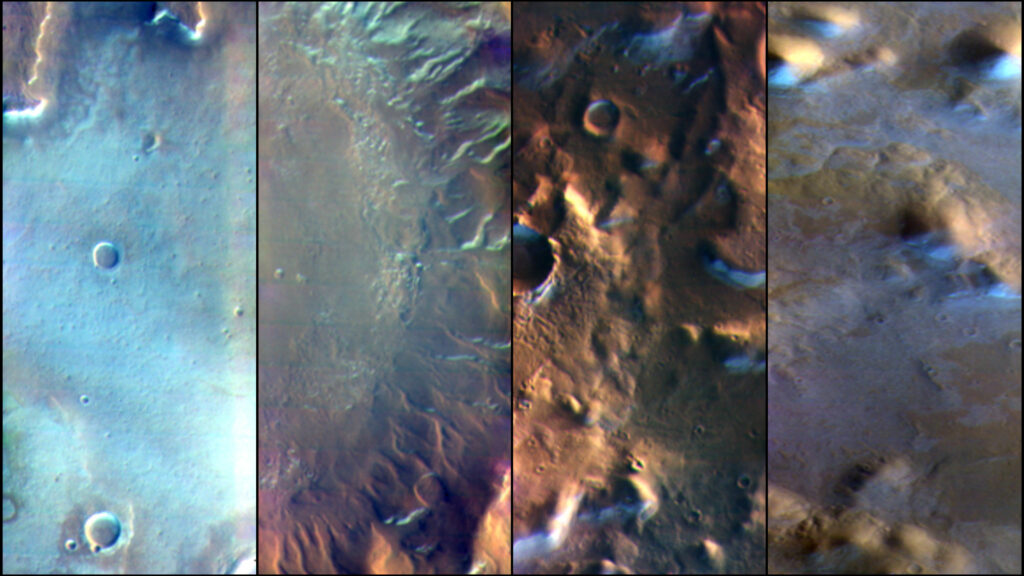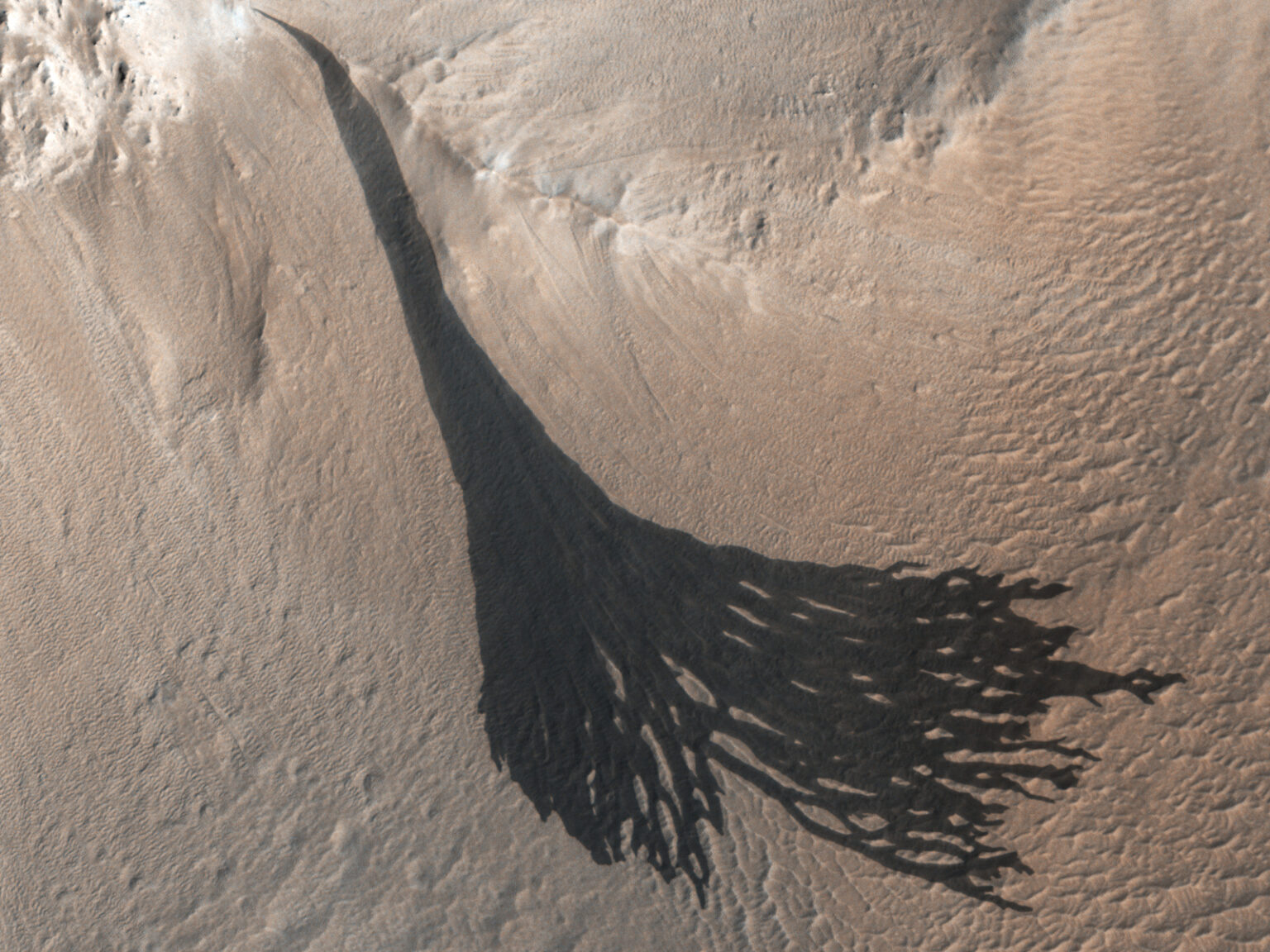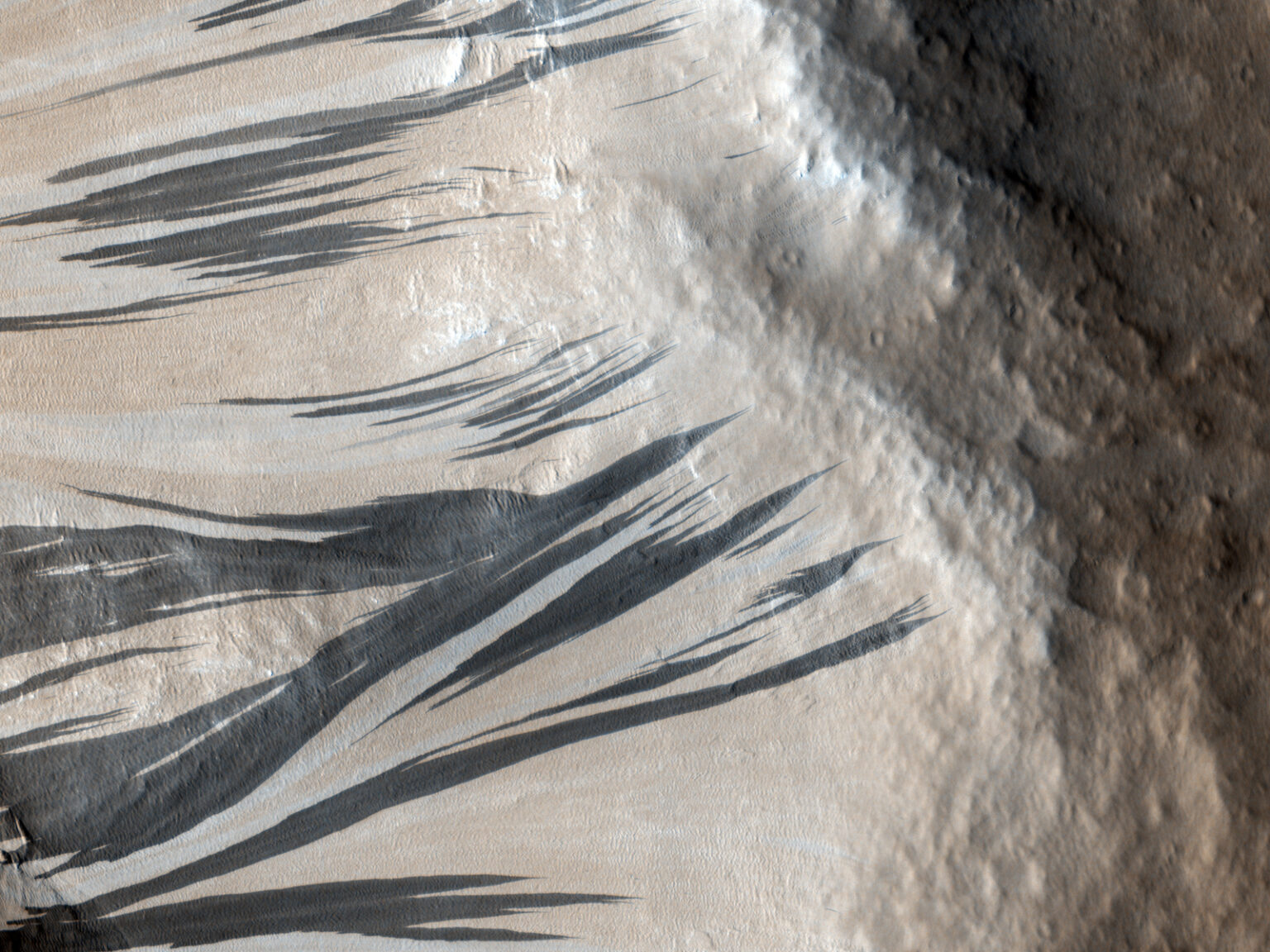A new study based on data from the Mars Odyssey spacecraft may explain why Martian frost may be invisible to the naked eye, as well as the mechanism of dust avalanches.
Invisible Martian Frost
By the standards of interplanetary missions, Mars Odyssey is a real “long-lived”. The spacecraft was launched back in 2001. But, despite its very advanced age, Mars Odyssey is still functioning and continues to carry out its scientific program. In particular, a THEMIS camera is installed on board, which regularly takes thermal images of the Martian surface.

In the current orbit, Mars Odyssey observes the Red Planet at 7 o’clock local time. Images of its surface taken in visible light often show bluish-white morning frost. It consists of dry ice — carbon dioxide, which freezes out of the atmosphere during the cold Martian nights, and sublimates with the sunrise.
After studying the images of the THEMIS camera, astronomers noticed a discrepancy. In the photo, the Martian frost occupies a much larger area than in the images taken in the visible range. Frost often covers even those areas where nothing is visible in other photos at all.
Dust Avalanches of Mars
In an article in the April issue of the Journal of Geophysical Research, a team of researchers published their version of the nature of the invisible Martian frost. Initially, astronomers assumed that THEMIS sees the locations of subsurface deposits of water ice. But after a thorough study of the THEMIS data, they put forward a proposal according to which Mars Odyssey observes “dirty frost”: a mixture of dry ice and small dust particles that darken it in visible light, but not in the infrared range.


According to the researchers, the “dirty frost” can also explain the mechanism of formation of dark bands that can stretch for a thousand or more meters along the Martian slopes. They are, in fact, traces of dust avalanches that slowly descend down the slopes, exposing darker subsurface material.
Making a map of the bands, the authors of the study drew attention to the fact that they usually appear in places where there are morning frosts. In their opinion, avalanches occur due to the evaporating frost creates pressure sufficient to loosen the grains of dust, which leads to its descent down the slope.
You can also read about how the Mars Express spacecraft photographed the Tantalus Fossae.
According to https://www.jpl.nasa.gov
Follow us on Twitter to get the most interesting space news in time
https://twitter.com/ust_magazine

